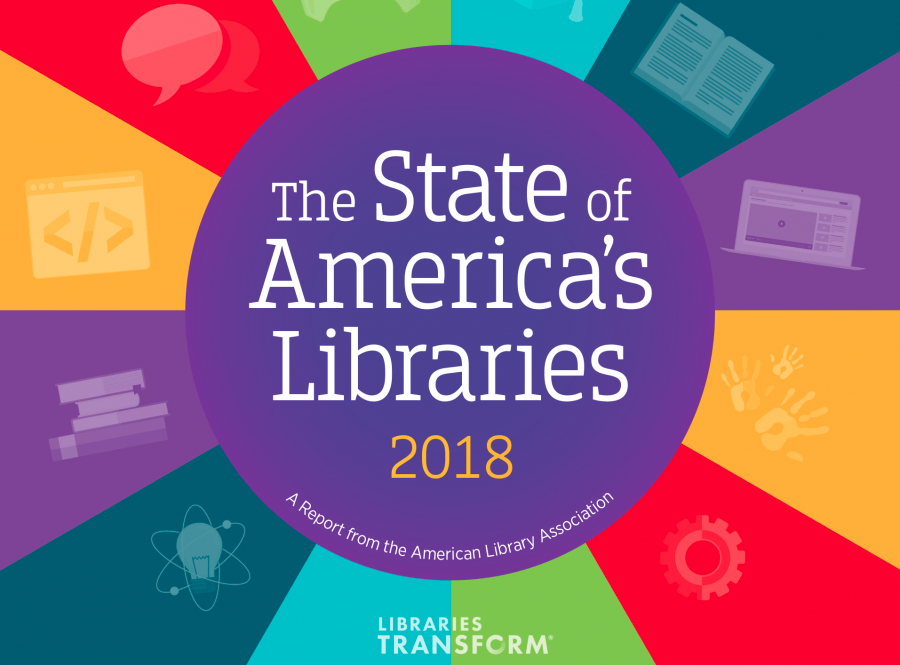
20 Reading Program Challenges to Drive Library Engagement Year-round
According to a recent three-year study, students who participate in summer reading programs significantly improve their reading skills. In fact, researchers who conducted the study found that participants in these programs were 52 Lexile points ahead of their peers!
If this much improvement is possible with a short, seasonal reading program, can you imagine what’s possible if you extend your program throughout the year? Many libraries that use Wandoo Reader are doing just that. Demco Software’s reading program management tool simplifies program logistics so that librarians can focus on driving community engagement all year long.
One of the keys to keeping kids engaged year-round is offering additional learning opportunities, such as those available through Wandoo Reader’s unique “Challenge” feature. Library staff can set up challenges with a description, requirements for completion and a completion action. Participants can access challenges in their Wandoo Reader account and are inspired to participate by both reading books and completing additional learning activities.
If you’re going to extend your reading program beyond the summer, you’re going to need even more engaging challenges to keep the excitement going. To help, we’ve come up with 20 fun ideas that you can easily implement. Read on to get inspired!
1. Encourage junior researchers.
Have participants go on a tour to see how people conducted research before everything was a “Hey, Siri” away. To complete the challenge, have participants complete a mini-worksheet that features specific questions based on your library’s reference resources. Bonus points if they ask a friendly librarian for help!
2. Share the literacy love.
Have participants get their reading minutes in while providing a community service. Partner with your local animal shelter and retirement homes to set times when program participants can read to their residents (dogs and cats included!). Have participants bring a photo that captures them reading with their new friend to a librarian to complete the challenge.
3. Make reading magical.
Create a display of books that focus on magic and card tricks. Challenge participants to learn a new trick and demonstrate it for a friend, caregiver, or, even better, a librarian!
4. Get a blockbuster sneak peek.
Challenge participants to read a book that’s being turned into a movie or that’s been made into a movie. Once they’ve finished, have them watch the movie and compare it to the book. Make it easy for participants by creating an engaging display of book/movie pairs to further promote that your library offers DVDs. To complete the challenge, participants should write up or tell a librarian about the main differences between the book and the movie and share which one they liked best.
5. Go social.
You’ve probably seen the challenges on social media that invite people to share their all-time favorite movies. Use a similar approach to drive engagement with your library’s social pages. Have teens and adults use a special hashtag that you create and tag your library’s Facebook, Twitter and/or Instagram handles when posting photos of their favorite books. To get a little writing practice in, have participants include short descriptions of why they like the books in their posts.
6. Go wild.
Help participants gain a better view into the wild world of animals by reading nonfiction books about wild animals. Have them complete a review about each book they read on Wandoo Reader or invite them to draw a picture of the featured animal to show they’ve completed the challenge. Partner up with your local zoo to reward animal readers with a free pass to the zoo if they complete the challenges.
7. Meet and greet your local librarians.
Participants who only interact with one librarian likely don’t know the full extent of support that’s available at your library. Have participants introduce themselves to a certain number of librarians over a week, noting their names and their favorite book (have librarians wear special name tags). Once they’ve met the required number of librarians, have participants turn their lists in for a prize.
8. Go on a virtual scavenger hunt.
Work with your IT department to “hide” a special character on different pages of your website. Move the character to a different page each week. At the end of the month, have participants turn in their logs, which should note when and where they found the character. Odds are the character isn’t the only thing they’ll find once they start exploring your site!
9. …or a physical scavenger hunt.
Hide special bookmarks in books and resources throughout the library. When participants find one of the bookmarks, have them bring it to the reference desk and describe where they found it for a special prize.
10. Get making.
If your library has a makerspace, invite participants to attend an event in the space. If you don’t have a designated makerspace yet, create some STEM take-home kits that participants can check out. Have them bring in what they made (or a photo) and show it to a librarian for a prize.
11. Take a trip around the world — no travel required!
Your library’s shelves hold passports to many different places. Have participatns go on an around-the-world adventure by reading books that are set on different continents (or that tell a story that originated in a different country or state). Once they’ve completed the challenge, have participants show a librarian their reading log, which should include a note about the setting or story origin of each of the books.
12. Check out a library event.
Your library is likely already putting a lot of work into planning and running weekly events and programs. Why not promote your amazing calendar of events to this engaged audience? Have reading program participants attend a library event in order to complete this challenge. You’re sure to prompt return attendees once they see how much you have to offer!
13. Take a closer look at your plate.
Do your participants know that peanuts grow underground? Or that brussels sprouts grow close together on sturdy, green stalks? Invite participants to learn more about their favorite legume, vegetable, fruit or gardening method by reading a book about it. To complete the challenge, have participants write a review on Wandoo Reader that includes one thing they already knew and one thing they learned from the book.
14. Take a literary tour of your town.
Your area likely has a rich literary history, whether that means there are books written about historical heroes and heroines who lived there or there are folktales that originated in your region. For this challenge, have participants read a selection of books that cover topics related to your town.
15. Get a little help from new friends.
Your program offers a prime opportunity for you to reach out to local businesses and organizations to discuss sponsorship and partnership opportunities and talk about how you can incorporate their businesses into challenges. These mutually beneficial relationships will help you boost visibility and traffic to your program, while doing the same for your partners.
Here’s one way you can partner up: Most everyone has a favorite book they remember from when they were younger. Team up with local businesses and reading program sponsors (banks, restaurants, dry cleaners, etc.) and have participants ask employees for recommendations of books to read (this is a great time for a refresher about when it’s appropriate to talk to adults who you do not know and when it is not). To complete the challenge, have participants share their reading log with a note about who recommended each book. Create a display to share your community’s recommendations with everyone.
16. Do a STEM-sational learning activity.
Each week, offer a new STEM challenge in the library, such as seeing how high you can build a tower with toothpicks and mini marshmallows or creating origami animals. Include take-home sheets describing the activity that allow participants to try it at home. You may also wish to hold a STEM night and set up stations with different activities (a great opportunity for your teen volunteers to flex their teaching skills). Allow participants to complete each station’s activity for additional challenge points.
17. Partner up with a local museum.
Work with a local history or art museum to create a trivia sheet that revolves around the museum’s collections, and arrange for free or reduced admission for your participants to allow them to experience the museum courtesy of your library program. Challenge participants to visit the museum, complete their sheets and turn them in for a prize.
18. Bring math into the equation.
Summer slide includes more than just reading loss; it also includes a loss of math skills (up to 2.6 months of learning loss over the summer!). Create a challenge that requires participants to flex their math skills by answering a weekly set of math questions. Tap into the free Bedtime Math website to find fun, age-appropriate math problems for each level of learner.
19. Encourage random acts of kindness.
Learning opportunities often present themselves when we offer our own time, hard work or knowledge to others. Create a blank checklist of 10 random acts of kindness and challenge summer reading participants to practice acts of kindness and fill in their sheets. To prompt action, create a display of ideas, along with books that encourage kindness and empathy, such as Have You Filled a Bucket Today? by Carol McCloud.
20. Put a little love in your art.
Create a display of art books that cover different art styles, such as realism, abstract, pop, etc. Provide large cutouts of hearts and art supplies and challenge participants to write what they love most about your library and then spend time decorating their hearts in a specific art style (using your collection for reference). Then, have them attach them to your display and ask participants to post pictures of their art on social media and tag your library. Share images from the display daily on your social media channels and send photos and a write-up to your local news outlets to spread the library love.
As this list demonstrates, the best challenges are fun, but they also serve a greater purpose. They invite patrons into — and out of — the library’s branches, create community connections, increase familiarity with what the library has to offer and foster a lifelong love of reading.
Learn how one library is accomplishing these goals with Wandoo Reader and making a huge impact in their community by downloading the Louisville Public Library case study here.

References
Summer Reading Programs Boost Student Achievement, Study Says
Related Resources
You Responded, We Listened: Wandoo Reader Survey Results and Plans for 2019
Discover what we learned from our Wandoo Reader customer survey and how we are using the results to enhance current features and develop new functionality for 2019.
read moreExplore the Benefits of Offering Online and In-Person Learning at Your Library
Are you interested in offering online learning opportunities while still continuing to hold in-person programs at your library? Explore the benefits of both learning formats and get ideas on ways they can complement each other.
read more4 Signs that Your Community Is Ready for a Library Mobile App
Are you thinking about investing in a library mobile app, but you’re not sure if your patrons would use it? Use this checklist to help you determine if your community is truly ready for a library mobile app.
read more





